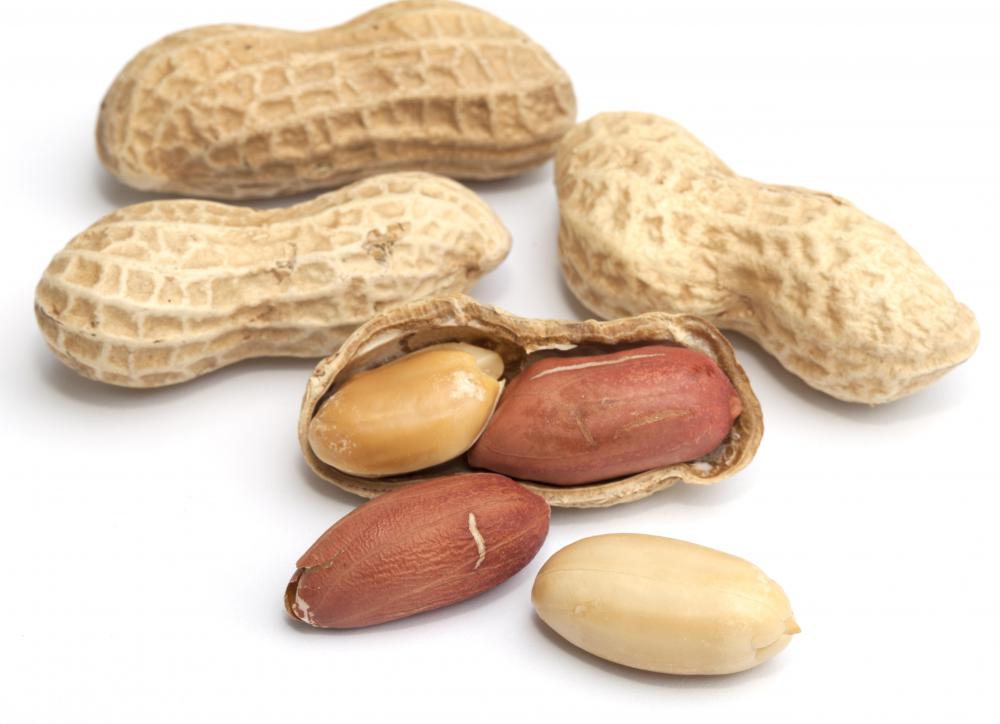At WiseGEEK, we're committed to delivering accurate, trustworthy information. Our expert-authored content is rigorously fact-checked and sourced from credible authorities. Discover how we uphold the highest standards in providing you with reliable knowledge.
What is a Niacin Flush?
The niacin flush refers to the redness and warmth that appear on the skin of the face and upper body shortly after a person takes the vitamin niacin. The reaction is the result of niacin binding to receptors on cells near the surface of the skin. These cells then release compounds that cause blood vessels under the surface to dilate. Dilation of these blood vessels causes flushing of the skin.
Niacin, also referred to as nicotinic acid, is one of the B vitamins and is essential to maintain health. It aids in metabolism of carbohydrates and fats. Eating a healthy diet of proteins, fruits, and vegetables is generally enough to maintain acceptable levels of niacin. It has been shown that niacin can reduce levels of cholesterol in the blood. Cardiac patients who are at risk of heart attack because of elevated levels of cholesterol may benefit by taking niacin supplements.

Supplementing the diet with 1,000 to 2,000 mg per day of niacin can lead to a reduction in low-density lipoprotein (LDL), or bad cholesterol, levels and a reduction in triglyceride levels in the blood. Niacin also raises the levels of high-density lipoproteins (HDL), which serve to protect the heart by carrying bad cholesterol from the arteries to the liver. Physicians may prescribe niacin in combination with a cholesterol-lowering statin drug.

Many patients do experience side effects after taking a niacin supplement. The niacin flush, which can lead to an uncomfortable redness and warmth in the upper body, may last up to one hour after ingesting niacin. Other side effects may include tingling, pain, or itching. Many patients stop taking niacin because of these side effects.
Once niacin is ingested, it acts by binding to a receptor on cells beneath the skin. This receptor is known as the G-protein coupled receptor 109A (GPR109A). It is present on the surface of spindle-shaped cells called Langerhans cells. Once activated, the Langerhans cells begin to release two types of prostaglandin molecules, PGD2 and PGE2.
These prostaglandins are similar to hormones and are derived from lipids. Prostaglandin molecules interact with smooth muscle cells and cause dilation of blood vessels. Dilation of these vessels at the surface of the skin causes the niacin flush.

Most patients who take niacin experience a decrease in the niacin flush over time. As levels of niacin in the blood stabilize, patients develop a tolerance to niacin and the flushing response should be reduced. Slow release niacin formulations may also help reduce the niacin flush. Aspirin or non-steroidal anti-inflammatory drugs (NSAIDs) may reduce flushing by interrupting the production of prostaglandins by the Langerhans cells. Elimination of the uncomfortable flushing may make niacin more attractive as a therapy for cardiac patients.
AS FEATURED ON:
AS FEATURED ON:















Discussion Comments
The niacin flush is not to be feared. It is due to the release of histamine. Remain calm if itching is uncomfortable and drink several glasses of cool water. This should ease symptoms.
As days pass on the niacin regimen, the person taking the niacin will experience the other benefits of taking niacin: better sleep, more energy, less anxiety, possible weight loss. Niacin as a supplement is priceless. Use the immediate release form and don't go over four grams a day max to protect the liver.
Post your comments